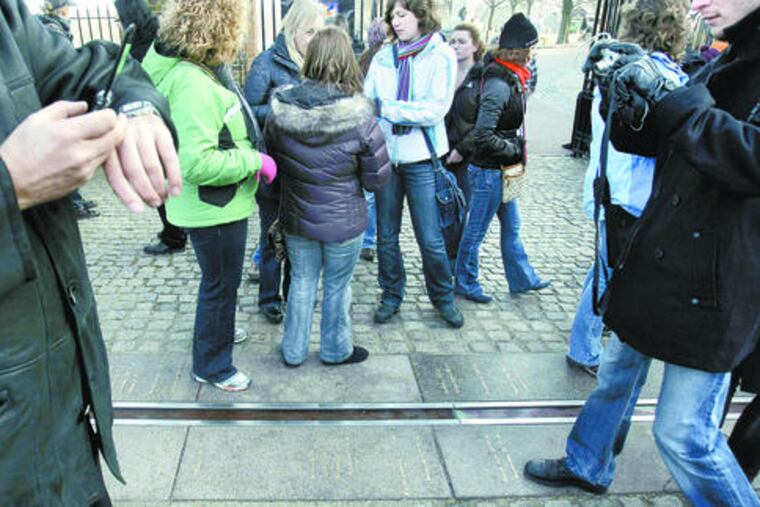Stop the clock, let the world catch up
Countdown to 2009: Three, two, one, leap second, zero.

AT THE GREENWICH PRIME MERIDIAN, England - Just a second, 2009.
It's going to take a little longer to say goodbye to the worst economic year since the Great Depression.
The custodians of time will ring in the new year by tacking a "leap second" onto the clock today to account for the slight slowing of Earth's rotation.
The leap second has been used sporadically at the Royal Observatory at Greenwich since 1972, an adjustment that has kept Greenwich Mean Time the internationally agreed time standard.
Some scientists now say GMT should be replaced by International Atomic Time - computed outside Paris - because new technologies have allowed atomic time to tick away with down-to-the-nanosecond accuracy.
But opponents say atomic time's very precision poses a problem.
A strict measurement, they say, would change our very notion of time forever, as atomic clocks would one day outpace the familiar cycle of sunrise and sunset.
The time warp wouldn't be noticeable for generations, but within a millennium, noon - the hour associated with the sun's highest point in the sky - would occur about 1 o'clock. In tens of thousands of years, the sun would be days behind the human calendar.
That bothers people such as Steve Allen, an analyst at the University of California at Santa Cruz's Lick Observatory. "I think [our descendants] will curse us less if we choose to keep the clock reading near 12:00 when the sun is highest in the sky," he said.
Atomic-time advocates argue that leap seconds are onerous because they are unpredictable.
Since the exact speed of Earth's rotation can't be plotted out in advance, leap seconds are added as needed. Sometimes, like this year, they are added on Dec. 31; other times they are inserted at the end of June 30.
Those willy-nilly fixes can trip up time-sensitive software, particularly in Asia, where the extra second is added in the middle of the day.
Critics say that everything from satellite navigation to power transmission and cellular communication is vulnerable to problems stemming from programs that ignore the extra second or add it at different times.
Although the time will pass in the blink of an eye, Judah Levine, a physicist at the National Institute of Standards and Technology in Boulder, Colo., predicts that the change will make him a very busy man starting about 5 p.m. Mountain Time.
As part of the institute's Time and Frequency Division, he will be helping to work out the bugs that follow.
"There's always somebody who doesn't get it right," Levine said. "It never fails."
At Britain's Royal Observatory, Susie Holt, 53, was adjusting her watch to match the digital display above the meridian. She said it would be a pity if GMT were made obsolete.
Her daughter, Kirsty, 15, was more forthright: "We don't want the French to control time. They might get it wrong or something."
The American Astronomical Society is officially neutral on the proposal to switch to atomic time, which is calculated based on readings from more than 200 atomic clocks maintained across the world.
Perhaps predictably, Britain's Royal Astronomical Society has come out in favor of conserving leap seconds. While spokesman Robert Massey said star-watchers could cope no matter what happened, he urged caution.
"It's not just a matter for the telecommunications industry to tell everybody to get rid of the leap second," Massey said. "It would be a big cultural change at the very least."